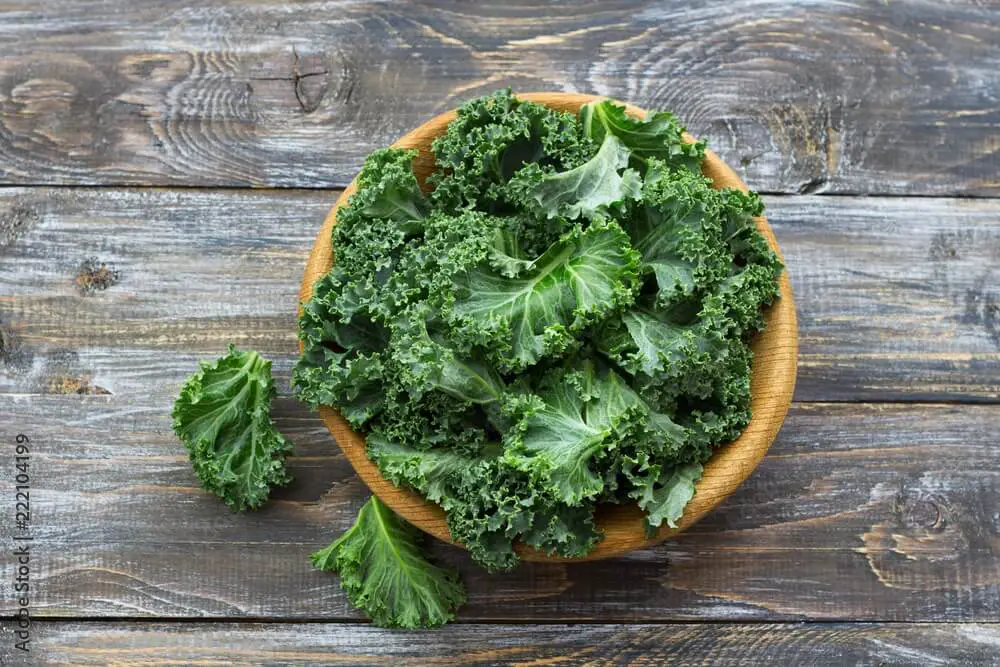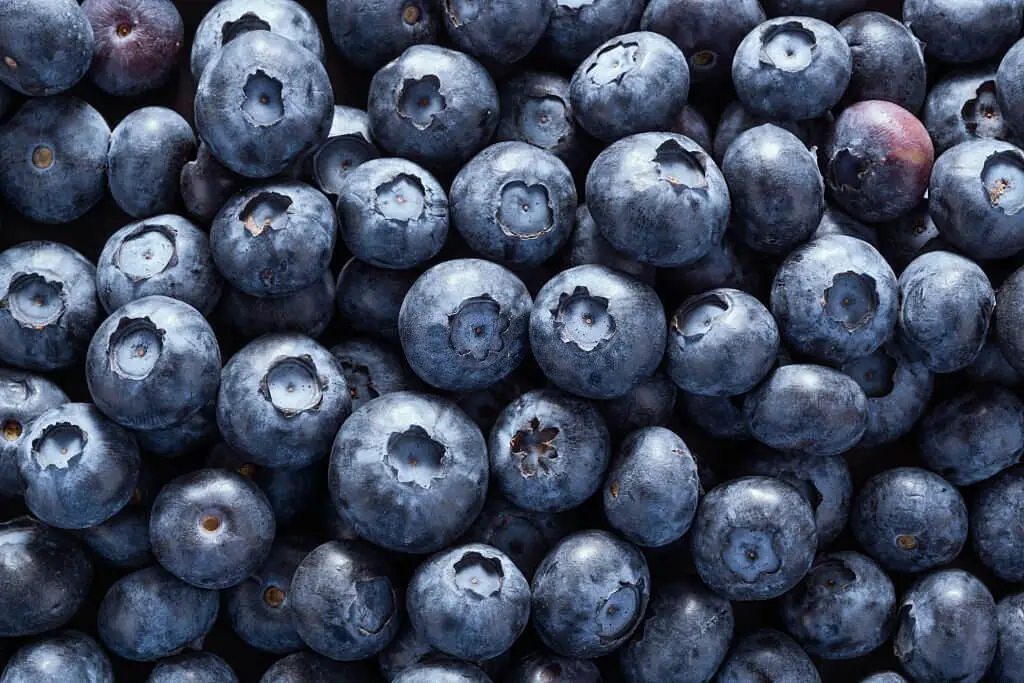So you’ve heard all about how kale is one of the most nutrient-dense superfoods out there. It’s packed with vitamins, minerals – the list goes on. But there’s just one problem – that darn bitterness! I’m sure I’m not the only one who has taken a big bite of kale only to screw up my face at the strong, unpleasantly bitter flavor.
While we all know kale is good for us, who wants to eat something that tastes so bitter? It can definitely put you off enjoying this veggie to the max. But hold on just a second before you toss that kale in the trash – did you know there’s actually a good reason why kale tastes that way? And even better, there are some simple tricks that can tone down the bitter taste so it’s not so unpleasant.
In this article, we’ll investigate why is kale bitter and what’s really causing kale’s bitterness under the hood. I’ll also share my favorite methods for battling back against those bitter compounds so you can start reaping all the health benefits of kale without dealing with that yucky bitterness. By the end, you’ll understand kale a whole lot better and may just find yourself looking forward to adding more of the green goodness to your plate. Let’s dive in and get to the root of why kale is so darn bitter!
Why is Kale Bitter?
Natural Defense Mechanisms
Much of kale’s bitter flavor comes down to natural compounds contained within the leafy greens themselves. Like many vegetables, kale has developed certain chemical defenses against being eaten by insects and pests that would otherwise feast on the leaves.
The primary culprits are glucosinolates – sulfur-containing compounds that are completely normal and healthy to find in kale. However, when the kale leaves are chewed or damaged In other ways, it activates the plant’s protections. Enzymes are released that break down the glucosinolates into bitter-tasting substances known as isothiocyanates.
This bitter flavor deters most insects and small herbivores from seeing kale as a tasty snack. The glucosinolates successfully advertise “do not eat” to potential plant pests. While not poisonous to us, the bitterness served kale well as a natural defense for thousands of years of evolution. Our bodies respond by associating that unpleasant sharpness with the potential of toxins, thanks to our instincts developed over millenia.
Pesticides and Commercial Growing Practices
For kale that is commercially grown and sold in supermarkets, an additional factor that may intensify any bitter flavors is the use of pesticides. Farmers regularly spray their kale crops with various chemicals designed to kill or deter insects, mites, fungi and other pests that could damage the plants or lead to disease.
While these pesticides help protect yield and profits, some residues can linger on the leaves even after washing. Just like the natural bitter compounds, foreign chemical pesticides activate our taste buds’ aversion to potentially toxic substances. The additional bitter compounds from pesticides are generally considered safe at low levels. However, they can amplify any bitterness already present from the kale plant itself.
Mass production also means kale varieties grown for market may have been selectively bred over generations to have higher or different levels of glucosinolates compared to kale grown in home gardens. The commercial growing environment and need to withstand travel and long shelf life could influence hormonal or chemical expressions that drive bitterness. So kale from the grocery may taste more bitter than ones you grow yourself with organic methods.
Dirt and Dust
One more factor that should not be overlooked is the potential contribution of dirt and dust particles to kale’s bitterness. Kale grown outdoors or stored in less than pristine conditions can harbor residual dirt, dust mites, pollen or other particulates trapped amongst the leaves.
When we take a bite of unwashed kale, these bits of soil and debris get introduced into our mouths right along with the leaves. Not only can they feel unpleasant to chew, but any trapped chemicals, microbes or non-food materials trigger more of an aversion response on the taste buds. Our saliva works to wash away unwanted substances, but in the process more bitter-blocking taste receptors get activated.
Commercial growers and distributors try to minimize dirt and damage to kale during harvesting, transport and storage. However, even a single dust mite hiding out on an organic kale leaf could potentially make it taste many times more bitter than normal. A quick rinse under cool tap water is usually enough to whisk away any surface grime enhancing the inherent bitterness. So before judgment, make sure to always wash kale thoroughly first.
Is Bitter Kale Safe to Eat?
Now that we understand the various reasons kale can take on a bitter taste, the logical next question is: is it still safe to consume? The good news is that a mild bitterness from natural plant compounds or pesticide residues does not pose a health risk.
The glucosinolates and isothiocyanates found in kale are not toxic in the amounts one would normally eat. In fact, some research has shown they may provide anti-cancer benefits. Pesticide levels are also carefully regulated to be below safety limits set by regulatory agencies.
As long as the kale does not appear spoiled or off in other ways like smell, texture or visible signs of rot, a slight bitter tang alone does not indicate kale has gone bad. The natural defenses evolved by kale are there primarily to make it unappetizing to eat whole for most animals and insects.
The levels of bitter chemicals needed to truly cause harm if consumed are much higher than what one would taste even in very bitter kale. So while bitterness may not be pleasurable, it does not make kale unsafe. The key is checking for other signs of spoilage if the bitterness seems abnormally strong.
In moderation and when fresh, bitter kale still provides the same impressive nutrient profile regardless of its flavor. So don’t be deterred by bitterness alone – kale that tastes somewhat sharp can absolutely be part of a healthy, balanced diet.
Removing Bitterness from Kale
Washing
The simplest and most effective way to combat kale’s natural bitterness is also the easiest – washing! As mentioned earlier, residual dirt and debris clinging to the leaves can exacerbate any bitter flavors. Taking just a few minutes to thoroughly rinse kale under cool running water can do wonders.
Hold the kale bunch by the stems and swish vigorously in a bowl of water. Agitate the leaves to dislodge any particles hiding between them. Drain and refill the water a few times until it runs clearly. You can even submerge the leaves if they remain very dirty. Make sure to check the undersides of leaves as well.
Proper washing is essential not just for taste, but also for food safety reasons. Dirty water carries potential microbes better left outside our kitchens. Once clean, spin or pat dry the leaves thoroughly so water is removed. Residual moisture can encourage faster spoilage too.
A quick wash may be enough for kale destined for cooking. But if eating raw, an extra rinse will maximize the removal of dirt and bitterness it contributes to the flavor profile. Clean kale sets the stage for successfully toning down any remaining natural sharpness through other techniques as well.
Blanching
Beyond washing, a gentle blanching of the kale leaves can go a long way in taming their bitterness. Blanching involves briefly submerging the leaves in boiling water before cooling. The heat activates enzymes that break down the glucosinolates responsible for the bitter flavor.
To blanch kale, bring a pot of water to a rapid boil. Prepare an ice water bath by filling a large bowl with cold water and ice. Working in batches to avoid crowding, add cleaned and dried kale leaves to the boiling water. Stir gently and allow 30 seconds to 1 minute before removing with tongs or a slotted spoon.
Immediately plunge the blanched leaves into the ice bath. This stops the cooking process so the kale retains its vibrant color and doesn’t overcook. Once cooled, drain thoroughly and pat dry. The leaves should be noticeably less bitter, with up to 50% reduction compared to raw kale.
Blanching mellows kale for uses like salads or light sautés without dulling its nutritional benefits too much. Just a brief steam or plunge into hot liquid tames bitterness for a better tasting veggie with far fewer bitter notes to detract from the flavors it’s served with.
Seasoning
Beyond preparation methods, clever use of common seasonings makes kale far more palatable when bitter compounds are present. Salting is one of the simplest techniques. With raw kale destined for salads, it’s best to dress and massage the leaves at least 30 minutes prior to serving.
The salt draw moisture from the leaves through osmosis. Over time, the saltwater solution diminishes bitter compounds by up to 25%. Rinsing after is unnecessary as very little residual salt remains at normal dressing amounts.
Other favorings like fresh lemon or lime juice, healthy fats from nut butters and oils, and fragrant spices also temper kale’s sharp edge. Just a teaspoon of apple cider vinegar or a squeeze of citrus per cup of leaves heightens flavor in a way that satisfies without relying on sugar.
Experimenting with seasonings from various cultures like garlic, chili, toasted sesame or miso opens up new flavor profiles to love. When cooked kale threatens bitterness, a ladle of pasta sauce takes charge while nutrients remain. With the right touches, bitter kale becomes crave-worthy greens your whole family will gobble up!
Marinating
For those who want to get ahead on their meal prep, marinating chopped kale is a brilliant hands-off approach. Simply combine washed and chopped kale with a flavorful acidic dressing in an airtight container. Allowing the kale to soak overnight or for a few hours before eating allows maximum flavor absorption while softening any bitterness.
The acids In ingredients like yogurt, citrus, and vinegars help extract bitterness from kale’s cellular structure over time. Common marinade combos may include Greek yogurt dressed with garlic and dill, an Asian-inspired rice vinegar and ginger mixture, or even fruity options like mango and lime. Get creative with whatever fresh herbs, spices and additional veggies you have on hand.
Marinated kale maintains a deliciously crisp-tender bite even the pickiest eater will love. It keeps well in the fridge for up to 5 days and is perfect for busy weeknight meals or packed lunches. Simply toss the tender morsels onto a salad, sandwich or bowl of grains and proteins. Bonus is you get ahead on meal prep with zero bitterness to detract from the flavors.
Salting
For raw kale salads, one of the most effective techniques for diminishing bitterness is also one of the simplest – salting. The process of salting draws moisture from the kale leaves using osmosis, helping to leach out many of the bitter-tasting compounds.
To salt kale, simply chop or slice the leaves and add to a bowl. Sprinkle generously with sea salt or kosher salt and use your hands to thoroughly massage the salt into the leaves. The friction helps break down cell walls in the kale, allowing the salt to penetrate deeper.
Let the salted kale sit for at least 30 minutes, or up to 2 hours to see the maximum effect. The leaves will shrink and soften slightly as they release their water. Periodically redistribute the leaves to ensure even salting.
Afterwards, squeeze any remaining liquid from the kale and proceed with your usual salad dressing. The kale will be noticeably less bitter, with some tasters reporting up to a 25% reduction! Rinsing is unnecessary as the salt amount used is negligible.
Salting is a simple and versatile way to tame bitterness whether you prefer kale in salads, lightly sautéed or simply snacking on kale chips. The process gives you silkier, sweeter tasting greens without chemicals or extra effort.
Signs of Spoiled Kale
While kale keeps quite well for several days past its picked prime, there are some signs to look out for that indicate it may be past its edible stage:
- Wilted/Soggy Leaves: Kale should look bright, crisp and with some bend to the stems. Leaves that limply drape instead of standing firm could be spoiled.
- Brown/Black Spots: Spoilage often shows as discolored patches that start brown and can progress darker. A few small spots are fine but avoid heavily speckled leaves.
- Slime or Mold: If you see slimy wet areas, fuzzy fuzzy growths or obvious mold, it’s a sure sign of spoilage bacteria/fungus at work.
- Sour/Rotten Smell: As kale passes its peak, it may emit a noticeably sour, acetic or rotten aroma instead of smelling fresh and green.
- Squishy Texture: Fresh kale has a substantial, crunchy bite. Kale that feels spongy, squishy or limp has begun to break down structurally.
- Open Wounds: If stems appear wet, soft or moldy at cut ends this is an entry point for foodborne microbes.
- Discoloration: The deep green hue of fresh kale may fade to an unappetizing grayish cast as it nears the end of edibility.
Trust your senses – if it looks, smells or feels at all questionable, it’s better to discard kale than risk consuming spoiled produce. Your health isn’t worth the chance.
FAQs
How long can I store kale before it goes bad?
Fresh kale can typically be stored in the fridge for 5-7 days. Keep it loose or in an open plastic bag and check regularly for signs of spoilage. For maximum freshness, use within 3-5 days.
Is all kale varieties equally bitter?
No, different varieties contain different levels of glucosinolates. Lacinato/dinosaur kale tends to be less bitter than curly kale. Sugar kale is among the sweetest tasting. Bitterness also depends on growing conditions.
Will cooking kale reduce bitterness?
Yes, cooking kale through methods like sautéing, steaming or adding to soups is very effective for decreasing its natural bitterness. The heat softens cell walls to release bitter compounds.
Can I freeze kale to keep it from going bitter?
Yes, blanching and shocking kale before freezing helps retain its color and texture while preventing bitterness from developing further in storage. It will still be best to sauté or add to recipes after thawing.
Will kale regain its bitterness after preparation?
No, once the bitterness has been removed through proper washing, blanching, salting or other methods, it will not return even after the kale has fully dried or been stored for later use. The flavor change is permanent.
How long do the effects of salting kale last?
The bitterness-reducing effects of salting kale will remain even after the leaves are rinsed and dried. The flavor change is permanent once the bitter compounds have been drawn out.
Can supplementing reduce kale’s bitterness?
Some research suggests supplements like calcium or potassium taken with kale may assist in neutralizing bitter tastes. However, proper preparation methods are usually more effective and reliably diminish bitterness.
What’s the best way to store kale once bitterness is reduced?
Prepped kale can be kept in the fridge in an airtight container or resealable bag for 3-5 days. You can also blanch and freeze kale up to 8 months with little quality loss.
How do I know if marinating kale long enough?
Most marinades will significantly reduce bitterness within 1-3 hours. Taste a small piece to check. Overnight is best for maximum flavor absorption but not necessary.
Can microwaving kale remove bitterness?
Microwaving kale in short bursts can help but is less effective than other methods like blanching or sautéing which more thoroughly cook the leaves. Combining with oil/acid also tones down any remaining bitterness.
Conclusion
In conclusion, kale’s natural bitter taste does not indicate an issue with safety, nutrition or quality. Through simple preparation techniques, its slight bitterness can easily be diminished or even masked without compromising the vegetable’s excellent health supporting compounds. With proper storage and handling, kale also maintains freshness for many days. With a little know-how on reducing or removing bitterness, this leafy green powerhouse can become a beloved part of any diet. Ultimately, those who give kale a chance often find its nutritional benefits far outweigh any initial reservations about sharpness of flavor. Armed with the right methods, there’s no reason to deny yourself the superfood just because of a little bitter bite.



